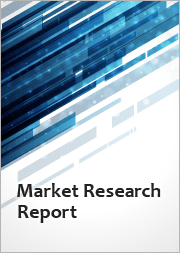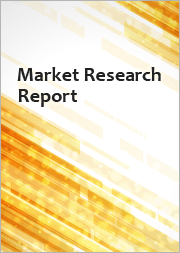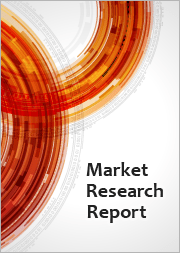
|
시장보고서
상품코드
1642494
바이오시밀러 시장 보고서 : 분자, 적응증, 제조 유형, 지역별(2025-2033년)Biosimilar Market Report by Molecule, Indication, Manufacturing Type, and Region 2025-2033 |
||||||
세계의 바이오시밀러 시장 시장 규모는 2024년 265억 달러에 달했습니다. IMARC 그룹은 2025-2033년 동안 24.1%의 성장률(CAGR)을 보이며 2033년에는 1,851억 달러에 달할 것으로 예상하고 있습니다. 주요 생물학적 의약품의 특허 만료, 바이오시밀러의 효능과 비용 효율성에 대한 인식 증가, 전 세계적인 만성 질환 유병률 증가, 바이오의약품 제조 기술의 지속적인 발전이 시장 성장을 촉진하는 주요 요인 중 일부입니다.
바이오시밀러는 기존의 FDA 승인 참조 제품과 매우 유사하며 임상적으로 의미 있는 차이가 없는 생물학적 제품입니다. 오리지널 제품과 동일한 작용 기전, 투여 경로, 제형 및 강도를 갖도록 개발됩니다. 복잡한 특성과 생산 방식으로 인해 참조 제품과 동일하지는 않지만 안전성, 순도 및 효능은 비슷하게 유지됩니다. 이러한 생물학적 제제는 고가의 레퍼런스 생물학적 제제에 대한 보다 저렴한 대안을 제시하여 경쟁을 촉진하고 환자의 치료 접근성을 높일 수 있습니다. 바이오시밀러가 시장에 출시되기 위해서는 치료적 동등성과 환자 안전을 보장하기 위해 엄격한 테스트와 엄격한 규제 심사를 거쳐야 합니다. 최근 몇 년 동안 종양학, 당뇨병, 자가면역질환 등 다양한 치료 분야에서 바이오시밀러가 큰 주목을 받고 있습니다.
시장을 이끄는 주요 요인 중 하나는 여러 블록버스터 생물학적 제제의 특허 만료가 다가오면서 바이오시밀러의 시장이 열렸고, 이로 인해 시장 확장을 위한 충분한 기회가 창출되었다는 점입니다. 바이오시밀러는 값비싼 생물학적 치료제에 대한 저렴한 대안으로 의료 비용을 절감할 수 있는 잠재력이 크기 때문에 의료 시스템과 환자에게 매력적인 제품입니다. 또한 생물학적 제제가 관리에 중요한 역할을 하는 암, 당뇨병, 자가면역질환 등 만성 질환의 부담이 전 세계적으로 증가하면서 제품 수요도 증가하고 있습니다. 이 외에도 FDA, EMA 등 다양한 규제 기관에서 바이오시밀러의 승인 경로를 간소화하여 개발 및 시장 진입을 장려하고 있습니다. 또한 미개척 시장으로 진출하고자 하는 바이오시밀러 기업들의 글로벌화가 빠르게 진행되고 있습니다. 이 외에도 바이오 의약품 제조 기술의 지속적인 혁신으로 효능과 안전성이 높은 바이오시밀러 생산이 가능해져 시장 성장을 더욱 촉진하고 있습니다.
바이오시밀러 시장 동향 및 촉진요인
향후 대히트 의약품 특허 만료
브랜드 생물학적 제제에 대한 특허 만료는 시장 성장을 이끄는 주요 요인 중 하나입니다. 생물학적 제제는 경쟁 제품의 진입을 장기간 막는 강력한 특허 포트폴리오로 보호받는 경우가 많습니다. 그러나 이러한 특허가 만료되면 기업들은 더 저렴하고 유사한 대체품을 개발하여 시장에 출시할 수 있는 길이 열립니다. 향후 몇 년 동안 연간 매출이 수십억 달러에 달하는 여러 블록버스터 생물학적 제제가 특허 보호를 잃게 될 것입니다. 따라서 이러한 특허 보호의 종료는 제조업체가 대체품을 시장에 출시하고 상당한 시장 점유율을 확보하여 시장 성장을 촉진할 수 있는 엄청난 기회를 의미합니다.
비용 효과
바이오시밀러는 제조업체가 참조 제품에 대해 수행한 모든 원래 임상시험을 반복할 필요가 없기 때문에 주로 연구개발(R&D) 비용이 절감되어 참조 생물학적 제제보다 생산 비용이 저렴합니다. 따라서 바이오시밀러는 가격이 훨씬 저렴하여 고가의 생물학적 치료제에 대한 저렴한 대안을 제공할 수 있습니다. 이러한 비용 효율성은 증가하는 의료 비용을 관리하기 위해 노력하는 의료 시스템과 생물학적 치료의 높은 비용으로 어려움을 겪는 환자에게 특히 매력적입니다. 또한, 바이오시밀러는 이전에는 생물학적 치료제를 사용할 수 없었던 신흥 시장에서도 필수 치료제에 대한 접근성을 높일 수 있습니다.
만성 질환 증가
암, 자가면역질환, 당뇨병과 같은 만성 질환의 유병률은 전 세계적으로 증가하고 있습니다. 이러한 질환은 일반적으로 생물학적 제제로 장기간 치료해야 하므로 이러한 의약품에 대한 수요가 증가하고 있습니다. 바이오시밀러는 오리지널 생물학적 제제와 유사한 효능과 안전성 프로파일을 제공하면서도 비용이 저렴하기 때문에 이러한 만성 질환 치료에 바이오시밀러를 사용하는 것이 점점 더 선호되고 있습니다. 예를 들어, 종양괴사인자 억제제와 같은 생물학적 의약품으로 관리되는 류마티스 관절염과 건선을 비롯한 질병의 발병률이 증가함에 따라 이러한 의약품의 바이오시밀러 시장이 크게 형성되고 있습니다. 전 세계적으로 만성 질환에 대한 부담이 계속 증가함에 따라 제품 수요도 마찬가지로 증가하여 시장 성장을 견인할 것으로 예상됩니다.
목차
제1장 서문
제2장 조사 범위와 조사 방법
- 조사의 목적
- 이해관계자
- 데이터 소스
- 1차 정보
- 2차 정보
- 시장 추정
- 상향식 접근
- 하향식 접근
- 조사 방법
제3장 주요 요약
제4장 바이오시밀러 시장 : 소개
- 개요
- 바이오시밀러에 관한 WHO와 FDA의 용어
- 바이오시밀러와 제네릭
- 바이오시밀러와 브랜드 생물학적 제제
제5장 바이오시밀러는 왜 그렇게 이익이 오르는가
- 생물학적 제제의 특허 끊기
- 바이오시밀러와 선발 의약품의 큰 가격 차이
- 정부와 제3자 지불자의 절약
- 생활습관병의 만연
- 처방 의사, 약사, 환자에게 인센티브
- 유럽과 신흥 시장에서 신규 기업의 출현
- 의약품 제조업체와 약물전달 장치 기업과의 제휴에 의한 제품 차별화의 강화
제6장 바이오시밀러의 조사, 개발, 제조
- 연구개발 : 바이오시밀러와 선발의약품
- 제조 : 바이오시밀러와 선발 의약품
제7장 세계의 바이오시밀러 시장
- 시장 개요
- 과거 실적
- COVID-19의 영향
- 시장 분석 : 부문별
- 시장 분석 : 제조유형별
- 시장 분석 : 적응증별
- 시장 분석 : 지역별
- 시장 예측
- 바이오시밀러의 특허 정세
- 미국의 특허 정세
- 유럽의 특허 정세
- 일본의 특허 정세
- SWOT 분석
- 개요
- 강점
- 약점
- 기회
- 위협
- 밸류체인 분석
- 기존의 선발 의약품의 특징
- 연구개발
- 바이오시밀러의 특성
- 독자적인 세포주 개발
- 제품 개발
- 사전 테스트
- 중간 임상시험(PK, PD)
- 확인 임상 제III상 시험
- 최종 제품의 배합
- 마케팅과 유통
- Porter's Five Forces 분석
- 개요
- 바이어의 협상력
- 공급자의 협상력
- 경쟁도
- 신규 진입업체의 위협
- 대체품의 위협
- 가격 분석
- 주요 가격 지표
- 가격 동향
- 마진 분석
제8장 시장 분석 : 분자별
- 인플릭시맙
- 인슐린 라르긴
- 에포에틴 알파
- 에타넬셉트
- 필글라스팀
- 소마트로핀
- 리툭시맙
- 폴리트로핀 알파
- 아달리무맙
- 페그필 글라스팀
- 트라스투주맙
- 베바시주맙
- 기타
제9장 시장 분석 : 제조유형별
- 자사 제조
- 시장 동향
- 시장 예측
- 계약 제조
- 시장 동향
- 시장 예측
제10장 시장 분석별 : 적응증별
- 자가면역질환
- 시장 동향
- 시장 예측
- 혈액 질환
- 시장 동향
- 시장 예측
- 당뇨병
- 시장 동향
- 시장 예측
- 암
- 시장 동향
- 시장 예측
- 성장부전
- 시장 동향
- 시장 예측
- 여성 불임증
- 시장 동향
- 시장 예측
- 기타
- 시장 동향
- 시장 예측
제11장 시장 분석 : 지역별
- 유럽
- 시장 실적
- 주요 기업와 바이오시밀러
- 시장 분석 : 국가별
- 시장 예측
- 이탈리아
- 독일
- 프랑스
- 영국
- 스페인
- 상기 이외의 유럽 국가
- 미국
- 현재 시장 동향
- 주요 기업와 바이오시밀러
- 시장 예측
- 일본
- 시장 실적
- 주요 기업와 바이오시밀러
- 시장 예측
- 인도
- 현재 시장 동향
- 주요 기업와 바이오시밀러
- 시장 예측
- 한국
- 현재 시장 동향
- 주요 기업와 바이오시밀러
- 시장 예측
- 기타 지역
- 현재 시장 동향
- 시장 예측
제12장 바이오시밀러 제조공장의 설립 요건
- 제조 공정
- 원재료 요건
- 원재료의 사진
- 토지와 건설의 요건
- 기계 및 인프라 요구 사항
- 기계 사진
- 공장 레이아웃
- 포장 요건
- 유틸리티 요건
- 인재 요건
제13장 경쟁 구도
- 시장 구조
- 주요 기업
- 주요 기업 프로파일
- Sandoz International GmbH
- Pfizer Inc.
- Teva Pharmaceutical Industries Limited
- Celltrion Inc.
- Biocon Limited
- Samsung Biologics
- Amgen, Inc.
- Dr. Reddy&s Laboratories Limited
- Stada Arzneimittel Ag
The global biosimilar market size reached USD 26.5 Billion in 2024. Looking forward, IMARC Group expects the market to reach USD 185.1 Billion by 2033, exhibiting a growth rate (CAGR) of 24.1% during 2025-2033. The expiration of patents for major biological drugs, growing awareness about the efficacy and cost-effectiveness of biosimilars, the rising prevalence of chronic diseases worldwide, and continual advancements in biopharmaceutical manufacturing technologies are some of the major factors propelling the market growth.
Biosimilars are biological products that are highly similar to and have no clinically meaningful differences from an existing FDA-approved reference product. They are developed to have the same mechanism of action, route of administration, dosage form, and strength as the original product. While they are not identical to their reference products due to their complex nature and production methods, they maintain comparable safety, purity, and potency. These biologic drugs offer a more affordable alternative to high-cost reference biologics, creating competition, and making treatment more accessible for patients. Their introduction in the market is subject to rigorous testing and stringent regulatory scrutiny to ensure therapeutic equivalence and patient safety. In recent years, biosimilars have gained immense traction biosimilars in different therapeutic areas such as oncology, diabetes, and autoimmune diseases.
One of the key factors driving the market is the upcoming expiry of patents for several blockbuster biologics, which has opened the field for biosimilars, creating ample opportunities for market expansion. As biosimilars are less expensive alternatives to costly biologic therapies, they offer significant potential for healthcare cost savings, making them appealing for healthcare systems and patients. This, coupled with the rising global burden of chronic diseases including cancer, diabetes, and autoimmune disorders, where biologics play a crucial role in management, is also augmenting the product demand. In addition to this, various regulatory bodies such as the FDA and EMA have streamlined the approval pathways for biosimilars, encouraging their development and market entry. Moreover, the rapid globalization of biosimilar companies looking to expand their footprint to unexplored markets. Besides this, continual innovations in biopharmaceutical manufacturing technologies have made it feasible to produce biosimilars with high efficacy and safety, further driving the market growth.
Biosimilar Market Trends/Drivers:
Upcoming Patent Expiry of Blockbuster Drugs
The expiry of patents on branded biologics is one of the key factors driving the growth of the market. Biologics are often protected by robust patent portfolios that prevent the entry of competing products for extended periods. However, once these patents expire, it opens the door for companies to develop and market comparable, more affordable alternatives. Over the next few years, multiple blockbuster biologics with billions in annual sales are set to lose patent protection. The end of these patent protections, therefore, represents a massive opportunity for manufacturers to bring their alternatives to market and gain a substantial market share, catalyzing the market growth.
Cost-Effectiveness
Biosimilars are less expensive to produce than their reference biologics, mainly due to reduced research and development (R&D) costs, as manufacturers do not need to repeat all the original clinical trials that were done for the reference product. Therefore, biosimilars can be priced significantly lower, offering an affordable alternative to often costly biologic therapies. This cost-effectiveness is particularly appealing for healthcare systems striving to manage increasing healthcare costs and for patients who may struggle with the high cost of biologic therapies. Furthermore, in emerging markets where biologic therapies may have previously been unaffordable, biosimilars can facilitate easier access to essential treatments.
Increase in Prevalence of Chronic Diseases
The prevalence of chronic diseases such as cancer, autoimmune disorders, and diabetes is on the rise worldwide. These conditions typically require long-term treatment with biologics, fueling the demand for these drugs. As biosimilars offer similar efficacy and safety profiles to the original biologics but at a lower cost, their use in the treatment of these chronic diseases is increasingly becoming the preferred choice. For instance, the rising incidences of diseases, including rheumatoid arthritis and psoriasis, which are managed with biologic drugs like tumor necrosis factor inhibitors, presents a large market for biosimilars of these drugs. As the global burden of chronic diseases continues to grow, it is anticipated that the product demand will similarly increase, propelling the market growth.
Biosimilar Market Segmentation:
Breakup by Molecule:
Infliximab
Insulin Glargine
Epoetin Alfa
Etanercept
Filgrastim
Somatropin
Rituximab
Follitropin Alfa
Adalimumab
Pegfilgrastim
Trastuzumab
Bevacizumab
Others
Infliximab represents the largest market segment
Infliximab, a monoclonal antibody, is used for the treatment of several chronic conditions such as rheumatoid arthritis, psoriatic arthritis, ankylosing spondylitis, Crohn's disease, plaque psoriasis, and ulcerative colitis. A high prevalence of these conditions worldwide has augmented the demand for effective treatments. Moreover, the wide range of indications leads to a large patient population that could potentially benefit from infliximab.
The original reference product, Remicade, has been on the market for a long time, with a well-established efficacy and safety profile. Once its patent expired, the entry of infliximab biosimilars offered a more cost-effective treatment option for these chronic conditions. Furthermore, the relatively earlier patent expiry of Remicade compared to other biologics has significantly contributed to its widespread popularity. Besides this, the manufacturing process and formulation for monoclonal antibodies such as infliximab are now well-established, facilitating the development and production of biosimilars, thereby propelling the segment growth.
Breakup by Indication:
Auto-Immune Diseases
Blood Disorder
Diabetes
Oncology
Growth Deficiency
Female Infertility
Others
Auto-immune diseases dominate the market
Autoimmune diseases include conditions such as rheumatoid arthritis, psoriasis, and inflammatory bowel disease, which are prevalent worldwide, affecting millions of people. This high prevalence results in a substantial increase in the demand for effective treatments. These diseases are typically chronic, requiring long-term treatment, leading to a consistent demand for the associated therapies. Over the years, biologics have revolutionized the treatment of numerous autoimmune diseases, offering improved control and prognosis. Many of these biologics have now lost or are losing patent protection, opening the way for biosimilars. Additionally, the original biologics used to treat autoimmune diseases can be expensive, placing a financial burden on healthcare systems and patients. Since biosimilars offer a more affordable alternative, they are becoming the preferred choice for patients and healthcare professionals. Furthermore, the increasing acceptance of biosimilars among physicians, patients, and healthcare systems for treating autoimmune diseases owing to their similar efficacy and safety profiles to the reference biologics is fueling the growth of this segment.
Breakup by Manufacturing Type:
In-house Manufacturing
Contract Manufacturing
In-house manufacturing accounts for the majority of the market share
In-house manufacturing allows complete control over the product quality, which is essential for biosimilars. Given the complexity of biologics and the strict regulations surrounding their manufacture, companies usually prefer to handle production themselves to ensure high standards are met. Moreover, biologic manufacturing processes often involve proprietary methods and technologies. In-house production helps protect these trade secrets, making it the preferred choice of manufacturing type. While the initial setup cost may be high, maintaining production in-house can significantly reduce costs per unit over time. Also, in-house manufacturing enables companies to minimize the risk of supply chain disruptions, ensuring a consistent supply of their products while facilitating flexibility and agility in production, including making adjustments or adaptations to the product or process as needed.
Breakup by Region:
Europe
Germany
France
Italy
Spain
United Kingdom
Rest of Europe
United States
Japan
India
South Korea
Others
Europe exhibits a clear dominance in the market
The report has also provided a comprehensive analysis of all the major regional markets, which include Europe (Germany, France, Italy, Spain, the United Kingdom, and Rest of Europe); the United States, Japan, India, South Korea, and Others. According to the report, Europe accounted for the largest market share.
Europe held the biggest share in the market since the region has a supportive regulatory environment, allowing several biosimilars to enter the European market well before other regions. This early start enabled Europe to gain a significant share of the market. Furthermore, the European Medicines Agency (EMA) has been a forerunner in creating a clear and supportive regulatory framework for the approval of biosimilars since 2005, earlier than many other regions. This early framework encouraged the development and marketing of biosimilars in the region. Various European countries have nationalized healthcare systems focused on cost-containment. Since biosimilars offer comparable clinical results to original biologics but at lower costs, they have become an attractive option in these settings. In addition to this, Europe has a high prevalence of diseases treated with biologics, such as autoimmune conditions and cancers. This high demand is supporting the growth of the market in the region. Apart from this, the increasing awareness and acceptance of biosimilars among healthcare professionals and patients in Europe has fueled their uptake, contributing to the market growth.
Competitive Landscape:
The market is experiencing a rise in strategic initiatives by key players aimed at capturing a larger share of the market. Companies are investing heavily in research and development (R&D) activities to introduce new biosimilars and improve their manufacturing processes. Numerous vendors are entering into strategic alliances, partnerships, and licensing deals to leverage the expertise of other companies and speed up the development, production, and marketing of their biosimilars. Besides this, several industry players are seeking regulatory approval for their biosimilars in new geographic markets to expand their global footprint. To build trust and confidence in their biosimilars, the leading manufacturers are conducting post-marketing surveillance studies to confirm the long-term safety and efficacy of their products. We also expect the market to witness a surge in product innovations, launch of new patient support programs, and rise in mergers and acquisitions (M&As) among key players to drive healthy competition within the domain during the forecast period.
The report has provided a comprehensive analysis of the competitive landscape in the market. Detailed profiles of all major companies have also been provided. Some of the key players in the market include:
Sandoz International GmbH
Pfizer Inc.
Teva Pharmaceutical Industries Limited
Celltrion Inc.
Biocon Limited
Samsung Biologics
Amgen, Inc.
Dr. Reddy's Laboratories Limited
Stada Arzneimittel Ag
Key Questions Answered in This Report
- 1. What was the size of the global biosimilar market in 2024?
- 2. What is the expected growth rate of the global biosimilar market during 2025-2033?
- 3. What are the key factors driving the global biosimilar market?
- 4. What has been the impact of COVID-19 on the global biosimilar market?
- 5. What is the breakup of the global biosimilar market based on the molecule?
- 6. What is the breakup of the global biosimilar market based on the indication?
- 7. What is the breakup of the global biosimilar market based on the manufacturing type?
- 8. What are the key regions in the global biosimilar market?
- 9. Who are the key companies/players in the global biosimilar market?
Table of Contents
1 Preface
2 Scope and Methodology
- 2.1 Objectives of the Study
- 2.2 Stakeholders
- 2.3 Data Sources
- 2.3.1 Primary Sources
- 2.3.2 Secondary Sources
- 2.4 Market Estimation
- 2.4.1 Bottom-Up Approach
- 2.4.2 Top-Down Approach
- 2.5 Forecasting Methodology
3 Executive Summary
4 Biosimilar Market - Introduction
- 4.1 Overview
- 4.2 WHO and FDA Terminology on Biosimilars
- 4.3 Biosimilars and Generics
- 4.4 Biosimilars and Branded Biological Products
5 Why are Biosimilars So Lucrative?
- 5.1 Patent Expiry of Blockbuster Biological Drugs
- 5.2 Significant Price Differential between Biosimilars and Innovator Drugs
- 5.3 Savings for the Government and Third Party Payers
- 5.4 Rising Prevalence of Lifestyle Diseases
- 5.5 Incentives for Prescribers, Pharmacists and Patients
- 5.6 Emergence of New Players in Europe and Emerging Markets
- 5.7 Increasing Product Differentiation as Manufacturers Tie-Up with Drug Delivery Device Companies
6 Biosimilar Research, Development and Manufacturing
- 6.1 Research and Development: Biosimilars vs. Innovator Drugs
- 6.2 Manufacturing: Biosimilars vs. Innovator Drugs
7 Global Biosimilar Market
- 7.1 Market Overview
- 7.2 Historical Performance
- 7.3 Impact of COVID-19
- 7.4 Market Breakup by Segment
- 7.5 Market Breakup by Manufacturing Type
- 7.6 Market Breakup by Indication
- 7.7 Market Breakup by Region
- 7.8 Market Forecast
- 7.9 Biosimilar Patent Landscape
- 7.9.1 Patent Landscape in the US
- 7.9.2 Patent Landscape in Europe
- 7.9.3 Patent Landscape in Japan
- 7.10 SWOT Analysis
- 7.10.1 Overview
- 7.10.2 Strengths
- 7.10.3 Weaknesses
- 7.10.4 Opportunities
- 7.10.5 Threats
- 7.11 Value Chain Analysis
- 7.11.1 Characterizing the Existing Innovator Drug
- 7.11.2 Research and Development
- 7.11.2.1 Characterization of Biosimilars
- 7.11.2.2 Developing a Unique Cell Line
- 7.11.3 Product Development
- 7.11.3.1 Pre-Testing
- 7.11.3.2 Intermediary Clinical Testing (PK/PD)
- 7.11.3.3 Confirmatory Clinical Phase-III
- 7.11.4 Final Product Formulation
- 7.11.5 Marketing and Distribution
- 7.12 Porter's Five Forces Analysis
- 7.12.1 Overview
- 7.12.2 Bargaining Power of Buyers
- 7.12.3 Bargaining Power of Suppliers
- 7.12.4 Degree of Competition
- 7.12.5 Threat of New Entrants
- 7.12.6 Threat of Substitutes
- 7.13 Price Analysis
- 7.13.1 Key Price Indicators
- 7.13.2 Price Trends
- 7.13.3 Margin Analysis
8 Market Breakup by Molecule
- 8.1 Infliximab
- 8.2 Insulin Glargine
- 8.3 Epoetin Alfa
- 8.4 Etanercept
- 8.5 Filgrastim
- 8.6 Somatropin
- 8.7 Rituximab
- 8.8 Follitropin Alfa
- 8.9 Adalimumab
- 8.10 Pegfilgrastim
- 8.11 Trastuzumab
- 8.12 Bevacizumab
- 8.13 Others
9 Market Breakup by Manufacturing Type
- 9.1 In-house Manufacturing
- 9.1.1 Market Trends
- 9.1.2 Market Forecast
- 9.2 Contract Manufacturing
- 9.2.1 Market Trends
- 9.2.2 Market Forecast
10 Market Breakup by Indication
- 10.1 Auto-Immune Diseases
- 10.1.1 Market Trends
- 10.1.2 Market Forecast
- 10.2 Blood Disorder
- 10.2.1 Market Trends
- 10.2.2 Market Forecast
- 10.3 Diabetes
- 10.3.1 Market Trends
- 10.3.2 Market Forecast
- 10.4 Oncology
- 10.4.1 Market Trends
- 10.4.2 Market Forecast
- 10.5 Growth Deficiency
- 10.5.1 Market Trends
- 10.5.2 Market Forecast
- 10.6 Female Infertility
- 10.6.1 Market Trends
- 10.6.2 Market Forecast
- 10.7 Others
- 10.7.1 Market Trends
- 10.7.2 Market Forecast
11 Market Breakup by Region
- 11.1 Europe
- 11.1.1 Market Performance
- 11.1.2 Key Players and Biosimilars
- 11.1.3 Market Breakup by Country
- 11.1.4 Market Forecast
- 11.1.5 Italy
- 11.1.5.1 Market Performance
- 11.1.5.2 Key Players and Biosimilars
- 11.1.5.3 Market Forecast
- 11.1.6 Germany
- 11.1.6.1 Market Performance
- 11.1.6.2 Key Players and Biosimilars
- 11.1.6.3 Market Forecast
- 11.1.7 France
- 11.1.7.1 Market Performance
- 11.1.7.2 Key Players and Biosimilars
- 11.1.7.3 Market Forecast
- 11.1.8 United Kingdom
- 11.1.8.1 Market Performance
- 11.1.8.2 Key Players and Biosimilars
- 11.1.8.3 Market Forecast
- 11.1.9 Spain
- 11.1.9.1 Market Performance
- 11.1.9.2 Key Players and Biosimilars
- 11.1.9.3 Market Forecast
- 11.1.10 Rest of Europe
- 11.1.10.1 Market Performance
- 11.1.10.2 Market Forecast
- 11.2 United States
- 11.2.1 Current Market Trends
- 11.2.2 Key Players and Biosimilars
- 11.2.3 Market Forecast
- 11.3 Japan
- 11.3.1 Market Performance
- 11.3.2 Key Players and Biosimilars
- 11.3.3 Market Forecast
- 11.4 India
- 11.4.1 Current Market Trends
- 11.4.2 Key Players and Biosimilars
- 11.4.3 Market Forecast
- 11.5 South Korea
- 11.5.1 Current Market Trends
- 11.5.2 Key Players and Biosimilars
- 11.5.3 Market Forecast
- 11.6 Rest of the World
- 11.6.1 Current Market Trends
- 11.6.2 Market Forecast
12 Requirements for Setting Up a Biosimilar Manufacturing Plant
- 12.1 Manufacturing Process
- 12.2 Raw Material Requirements
- 12.3 Raw Material Pictures
- 12.4 Land and Construction Requirements
- 12.5 Machinery and Infrastructure Requirements
- 12.6 Machinery Pictures
- 12.7 Plant Layout
- 12.8 Packaging Requirements
- 12.9 Utility Requirements
- 12.10 Manpower Requirements
13 Competitive Landscape
- 13.1 Market Structure
- 13.2 Key Players
- 13.3 Profiles of Key Players
- 13.3.1 Sandoz International GmbH
- 13.3.2 Pfizer Inc.
- 13.3.3 Teva Pharmaceutical Industries Limited
- 13.3.4 Celltrion Inc.
- 13.3.5 Biocon Limited
- 13.3.6 Samsung Biologics
- 13.3.7 Amgen, Inc.
- 13.3.8 Dr. Reddy's Laboratories Limited
- 13.3.9 Stada Arzneimittel Ag



















